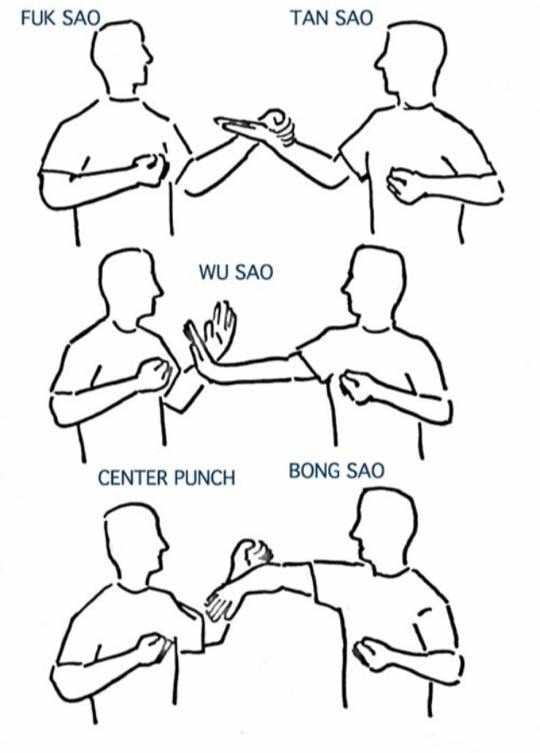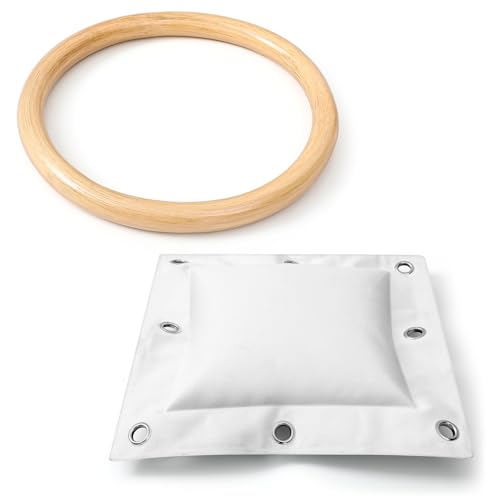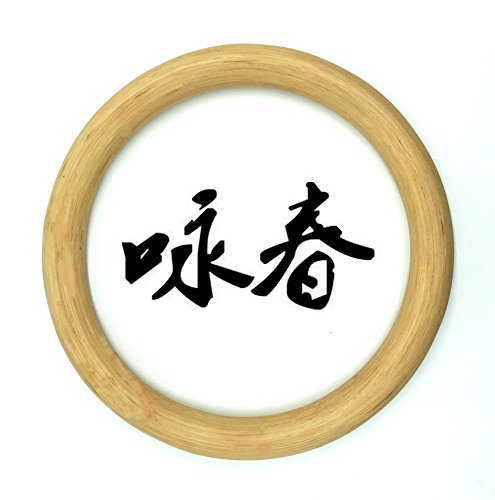Wing Chun is a distinguished traditional Chinese martial art that has garnered attention for its focus on close-range combat techniques.
With roots tracing back to the late 17th century, it was conceived during the Qing Dynasty.
The creation of Wing Chun is attributed to the Buddhist nun Ng Mui.
one of the legendary Five Elders who survived the destruction of the Shaolin Temple.
Ng Mui passed on her martial knowledge to a young woman named Yim Wing Chun, after whom the art was subsequently named.
One of the defining aspects of Wing Chun is its adherence to several core principles that set it apart from other martial arts.
Central to these principles is the centerline theory.
Which emphasizes controlling the central axis of an opponent’s body to gain a strategic advantage.
This approach ensures maximum efficiency in both defense and offense by minimizing unnecessary movements and focusing on direct, linear attacks.
Simplicity is another hallmark of Wing Chun.
The art prioritizes straightforward techniques that can be executed quickly and effectively in real-world self-defense scenarios.
This simplicity does not imply a lack of sophistication; rather, it reflects a deep understanding of human biomechanics and the dynamics of combat.
By stripping away superfluous movements, practitioners can respond more rapidly and with greater precision.
The economy of movement is closely related to the principle of simplicity.
Wing Chun techniques are designed to conserve energy by using the shortest and most efficient paths.
This principle is vital in close-range combat.
where rapid responses and sustained engagement are often required.
Practitioners are trained to deflect and redirect an opponent’s force rather than meeting it head-on, thereby reducing the risk of injury and fatigue.
Beyond its physical techniques, Wing Chun also encompasses a rich philosophical dimension.
It encourages mindfulness, discipline, and the cultivation of inner calm.
These attributes are essential for practical self-defense, enabling practitioners to remain composed and effective under pressure.
Through the practice of Wing Chun, individuals can develop not only their martial skills but also their mental and emotional resilience.

The Role of the Wing Chun Ring in Training
The Wing Chun ring, often referred to as the “Wing Chun rattan ring,” is an essential tool in the practice of this traditional martial art.
The ring is typically circular, with a diameter ranging from 12 to 14 inches.
and is Make from materials such as wood, metal, or more commonly, rattan.

The choice of material can vary depending on personal preference or the specific training needs of the practitioner.
But rattan remains a popular option due to its flexibility and durability.
The primary purpose of the Wing Chun ring in training is to enhance various techniques integral to the martial art.
By practicing with the ring, practitioners can improve their muscle memory.
Which is crucial for executing moves with precision and consistency.
The ring also plays a vital role in developing better structure and alignment.
ensuring that the body mechanics of the practitioner are optimized for both offense and defense.
Additionally, the ring helps in refining the practitioner’s sensitivity and reaction time, which are key components in Wing Chun.
Integration of the Wing Chun ring into training is methodical and deliberate.
Practitioners use the ring to perform a series of repetitive movements that simulate real combat scenarios.
For instance, exercises involving the ring can help in honing the centerline theory.
A fundamental principle in Wing Chun that emphasizes protecting and attacking along the body’s central axis.
The ring serves as a physical boundary that guides the practitioner to maintain proper arm positioning and movement flow.
Thereby reinforcing the principles of Wing Chun.
The significance of the Wing Chun ring in mastering the art cannot be overstate.
It is a versatile tool that supports the development of core skills required in Wing Chun.
Whether one is a novice or an advanced practitioner.
Incorporating the Wing Chun ring into regular training sessions can lead to substantial improvements in technique, structural integrity, and overall martial proficiency.
Basic Wing Chun Ring Drills and Exercises
The Wing Chun ring, or rattan ring, is a versatile tool in Wing Chun training, aiding in the development of wrist strength, structural integrity, and hand coordination.
Here, we explore several fundamental drills and exercises that can be performed with the Wing Chun ring, detailing each step to ensure proper form and technique.
1. Single Hand Inside and Outside Circle Drill: Begin by holding the Wing Chun ring in one hand.
Insert your arm through the ring, positioning it around your wrist.
Perform circular motions with your wrist, moving both inside and outside the ring.
This drill enhances wrist flexibility and strength.
Focus on maintaining a relaxed yet firm grip, ensuring smooth and control movements.
2. Double Hand Rolling Drill: Hold the Wing Chun ring with both hands, placing it around your forearms.
Execute rolling motions by rotating your forearms in opposite directions.
This exercise improves forearm strength and coordination.
Pay attention to the alignment of your elbows and shoulders, keeping them relaxed and in proper structure to avoid unnecessary tension.
3. Tan Sau and Bong Sau Transition Drill: Insert both forearms into the ring, starting with the Tan Sau (palm-up block) position.
Transition smoothly to Bong Sau (wing arm block) by rotating your forearms outward.
This drill helps in maintaining the correct structure and fluidity between these fundamental Wing Chun techniques.

Practice slowly at first to ensure accuracy, gradually increasing speed as you become more comfortable.
4. Pak Sau (Slapping Hand) Drill: With the Wing Chun ring around your wrist, practice the Pak Sau motion by slapping the ring with your hand.
This exercise sharpens hand-eye coordination and reaction time.
Focus on precision and quickness, ensuring each Pak Sau is executed with proper technique.
For effective practice of these drills, consistency is key.
Begin with slow and controlled movements, emphasizing accuracy and form.
As you build muscle memory and confidence, gradually increase the speed and intensity of your exercises.
Incorporate these Wing Chun ring drills into your regular training routine to enhance your overall martial arts proficiency.
Advanced Techniques with the Wing Chun Ring

As practitioners progress in their Wing Chun journey, the Wing Chun ring becomes an invaluable tool for mastering advanced techniques and complex combinations.
These advanced exercises build upon the foundational skills acquired in earlier stages.
offering an avenue to refine sensitivity, enhance reflexes, and achieve fluidity of movement.
The Wing Chun ring serves as a tactile guide, allowing practitioners to maintain proper form and structure while executing intricate motions.
One such advanced technique is the Lop Sau or “Grabbing Hand” drill.
This exercise involves using the Wing Chun ring to practice the simultaneous actions of grabbing and redirecting an opponent’s force.
By consistently practicing Lop Sau with the ring, practitioners develop enhanced sensitivity to pressure changes, which is crucial for effective redirection and control during combat.
Another key drill is the Chi Sau or “Sticky Hands,” where practitioners work with the Wing Chun ring to maintain continuous contact with a partner’s arms.
This exercise promotes the development of reflexes and the ability to respond swiftly to an opponent’s movements.
The ring ensures that the practitioner’s movements remain confined within the correct trajectory, fostering precision and control.
Additionally, advanced combinations such as the Bong Sau to Tan Sau transition can be practiced with the Wing Chun ring.
This drill emphasizes the fluidity of movement as the practitioner shifts from a defensive to an offensive posture.
The ring aids in maintaining the correct angles and distances, ensuring that the transitions are executed seamlessly.
Consistency and precision are paramount when practicing advanced Wing Chun ring techniques.
Regular training sessions help reinforce muscle memory, enabling practitioners to perform these complex movements instinctively.
The ring acts as both a physical and mental reminder to maintain the structural integrity and efficiency of movements.
In conclusion, the Wing Chun ring is an essential tool for advancing one’s skills in Wing Chun.
By engaging in advanced techniques and combinations with the ring.
practitioners can elevate their sensitivity, reflexes, and fluidity of movement.
ultimately becoming more proficient and effective martial artists.
Common Mistakes and How to Avoid Them
When engaging in Wing Chun ring practice, practitioners often encounter a series of common mistakes that can impede their progress and effectiveness.
One prevalent error is the improper grip on the Wing Chun ring.
Many novices tend to hold the ring too tightly, which restricts fluidity and can lead to unnecessary tension in the arms and shoulders.
To avoid this, it is crucial to maintain a relaxed yet firm grip, allowing for smooth and effective movements.
Another frequent mistake is poor posture.
Practitioners may find themselves leaning too far forward or backward, which disrupts balance and reduces the efficacy of the techniques being practiced.
Correcting this involves regularly checking one’s stance to ensure that the spine is straight.
The shoulders are relaxed, and the weight is evenly distributed on both feet.

Engaging in regular self-assessment and mindful training can significantly aid in maintaining proper form.
Additionally, it is common to see practitioners focusing solely on the movements of the hands and arms.
neglecting the integration of the entire body.
Effective Wing Chun ring practice requires the coordination of the whole body to generate power and maintain balance.
To correct this, practitioners should be mindful of their body mechanics, ensuring that the movements of the arms are synchronized with the movements of the torso and legs.
Overtraining is another pitfall that can lead to diminishing returns and potential injury.
Wing Chun ring practice should be approached with a balanced training regimen that allows for adequate rest and recovery.
Practitioners should listen to their bodies and avoid pushing beyond their limits.
ensuring that each training session is both effective and sustainable.
Finally, a lack of regular self-assessment can hinder progress.
Practitioners should frequently review their techniques, possibly by recording their practice sessions or seeking feedback from more experienced practitioners.
This continuous loop of practice, assessment, and adjustment is key to mastering the use of the Wing Chun ring.
By being aware of these common mistakes and implementing strategies to avoid them.
Practitioners can enhance their Wing Chun ring practice, leading to more effective and efficient training sessions.
Benefits of Incorporating the Wing Chun Ring into Your Practice
Integrating the Wing Chun ring into your training regimen offers a multitude of benefits that can significantly enhance your martial arts practice.
One of the foremost advantages is the improvement in strength.
The Wing Chun ring requires the practitioner to maintain tension and resistance.
which in turn builds muscle strength, particularly in the arms and shoulders.
This added strength contributes to more powerful strikes and better overall physical conditioning.
Flexibility is another area where the Wing Chun ring proves invaluable.
The circular motion and resistance provided by the ring encourage a greater range of motion in the joints and muscles.

Over time, this leads to enhanced flexibility, which is crucial for executing fluid and dynamic movements integral to Wing Chun techniques.
Coordination is a key aspect of martial arts, and the Wing Chun ring is an excellent tool for developing this skill.
The ring’s design forces practitioners to synchronize their movements, promoting better hand-eye coordination and spatial awareness.
This improved coordination translates to more precise and effective techniques during sparring or self-defense scenarios.
Moreover, the Wing Chun ring aids in reinforcing the core principles of the martial art.
By practicing with the ring, students gain a deeper understanding of concepts such as centerline theory, proper structure, and energy flow.
The ring acts as a tangible reminder of these principles, ensuring that they are consistently applied during practice.
Experienced practitioners often attest to the transformative impact of the Wing Chun ring on their training.
For instance, Sifu Lee, a seasoned Wing Chun instructor, shares.
“Incorporating the ring into my practice has not only strengthened my techniques but also deepened my understanding of the art.

It has become an indispensable part of my training routine.”
Similarly, many students report noticeable improvements in their overall technique and confidence after regular use of the ring.
In summary, the Wing Chun ring offers a comprehensive approach to enhancing strength, flexibility, coordination, and understanding of Wing Chun principles.
Its benefits are well-document by practitioners who have experience firsthand the positive impact it brings to their martial arts journey.
Choosing the Right Wing Chun Ring for Your Practice
When embarking on your journey into Wing Chun ring practice, selecting the appropriate Wing Chun ring is crucial.
The right ring can significantly enhance your training experience and help you develop the necessary skills more effectively.
There are various types of rings available on the market, each with its own set of benefits and considerations.
Understanding the differences in materials, sizes, and craftsmanship is essential in making an informed decision.
Wing Chun rings come in a variety of materials, including wood, metal, and synthetic composites.
Wooden rings are traditional and offer a natural feel, making them a popular choice among practitioners.
They are generally lighter and easier to handle, which is beneficial for beginners.
Metal rings, on the other hand, are heavier and more durable, providing a different type of resistance that can enhance strength training.
Synthetic composite rings are another option, combining durability with a lightweight feel, and are often more affordable.
The size of the Wing Chun ring is another important consideration. Rings typically range from 8 to 12 inches in diameter.
Smaller rings are suitable for those with smaller frames or for practitioners looking to refine their technique with more precision.
Larger rings offer more resistance and you can use to build strength and improve movement fluidity.
It is advisable for beginners to start with a medium-sized ring, around 10 inches in diameter, to balance ease of use and effectiveness.

Craftsmanship and durability are critical factors when selecting a Wing Chun ring.
High-quality rings should have a smooth finish with no sharp edges or splinters, which could cause injury.
Inspect the ring for any cracks or weak spots, particularly in wooden rings, as these can affect the ring’s longevity and performance.
A well-crafted ring will provide consistent training support and withstand rigorous practice.
Reliable sources for purchasing quality Wing Chun rings include martial arts supply stores, specialized online retailers, and reputable manufacturers.
Reading reviews and seeking recommendations from experienced practitioners can also guide you in finding a trustworthy supplier.
Investing in a good Wing Chun ring not only ensures safety but also enhances your training experience, allowing you to focus on developing your skills effectively.
For beginners, starting with the right equipment is crucial. Opt for a ring that feels comfortable and manageable, paying attention to material and size.
As you progress, you may experiment with different types of rings to find what best suits your training needs.
Remember, the right Wing Chun ring will become an invaluable tool in your martial arts journey.
Integrating Wing Chun Ring Practice into Your Daily Routine
Incorporating Wing Chun ring practice into your daily training regimen can significantly enhance your skills and deepen your understanding of this martial art.
To achieve the best results, it’s essential to establish a structures routine that balances ring exercises with other aspects of Wing Chun practice.
To start, allocate a specific time each day dedicate solely to Wing Chun ring practice.
Consistency is crucial, so choose a time that you can commit to regularly, whether it’s in the morning, during lunch, or in the evening.
Begin with a warm-up session to prepare your muscles and joints, reducing the risk of injury and improving flexibility.
A balance daily routine might include 10-15 minutes of ring exercises, focusing on fundamental movements such as circles, strikes, and deflections.
Follow this with 15-20 minutes of other Wing Chun drills, such as forms, chi sao (sticky hands), or partner drills.
This combination ensures a holistic approach to your training, integrating both ring-specific techniques and broader Wing Chun principles.
Gradual progression is key to mastering Wing Chun ring practice.
Start with basic exercises and gradually increase the complexity and intensity as you become more proficient.
Patience is essential; rushing through techniques can lead to improper form and potential injury.
Focus on quality over quantity, ensuring each movement execute with precision and control.
Staying motivated can be challenging, but there are several strategies to help maintain your commitment.
Set achievable goals and track your progress to stay encouraged.
Join a Wing Chun community or find a training partner to share your journey, providing mutual support and accountability.
Additionally, remind yourself of the long-term benefits of consistent practice, such as improved coordination, strength, and self-defense skills.
By integrating Wing Chun ring practice into a well-structured daily routine, practitioners can cultivate discipline.
Enhance their martial arts skills, and achieve a deeper understanding of Wing Chun principles.
Remember, consistency and patience are the cornerstones of effective training, leading to gradual but significant improvements over time.





